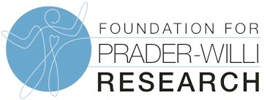Funding Summary
Understanding the greatest clinical challenges is important in PWS, but there are individuals with PWS who are not participating in registry studies or surveys. Insurance claims data can be used to identify most people with PWS receiving care in the US. This project will analyze a vast database of claims from emergency departments and hospitals for information about the health care problems encountered by individuals with PWS in 2021. This study will be able to identify unique clinical challenges for PWS patients, explore mortality in people with PWS, and examine causes of death and clinical factors (including obesity) that may contribute to mortality. This will highlight the greatest areas of need in the ongoing treatment of PWS.
Lay Abstract
A key component of advancing the care of individuals with PWS is understanding the greatest unmet clinical challenges. While numerous tools can address this question including surveys and registry studies, there may be individuals with PWS not participating in such efforts and whose experiences may be missing from present data. To make sure we understand all individuals with PWS, it would be helpful to include “big data” sources that include everyone in the US receiving care on an everyday basis, and not just in research studies. One source of data like this are administrative claims data, which are generated in the billing for medical care and thus are created automatically without requiring active effort on the part of the patient. Since 2019, individuals with PWS can be uniquely identified in such records based on a new code (Q87.11), meaning that there is a growing source of clinical data on the clinical needs of individuals with PWS.
For my project, I propose to analyze administrative claims data from emergency departments and hospitals for data about individuals with PWS. I’ve already performed a study like this on 3 months of hospital data for individuals with PWS in 2019, exploring 540 hospitalizations, but this study will analyze 4,700 hospitalizations and 8,000 emergency department visits, making it likely the largest ever study on PWS care. Using these data, I aim to describe who the community of PWS patients are in the US and what makes them sick enough to need to present to the hospital. By comparing individuals with PWS to similar individuals without PWS (in a type of research called a case-control study) I will be able to identify unique clinical challenges for PWS patients. Because of the large size of this study, I will also be able to explore mortality in individuals with PWS and examine causes of death and clinical factors (including obesity) that may contribute to mortality.
While this project does not, in and of itself, result in new therapies, it will highlight the greatest areas of need in the ongoing treatment of PWS. This provides immediate information to patients and families as to the unique burden of illnesses faced by those with PWS. Equally importantly, it may likewise highlight areas of strength by identifying illnesses that are less common among PWS patients. In the short to medium term, this will allow the targeting of quality improvement efforts and clinical guideline development towards areas that may most effectively improve care. Additionally, this national data will provide a valuable confirmatory source of data to ongoing efforts such as the PATH for PWS registry study. As these data sources are independent, any findings present in both sources are highly likely to be generalizable to the entire population with PWS, and any discrepancies between the two studies could provide fruitful sources for future explorations. Thus, this proposed project would be useful not only in the new data it generates, but also in maximizing the value of the detailed patient data provided by participants in other ongoing studies.
Research Outcomes: Public Summary
This project leveraged large-scale healthcare data to improve understanding of diagnostic accuracy and healthcare utilization in individuals with Prader-Willi Syndrome (PWS). The findings have direct implications for clinical care, policy, and future research. All Aims of this project were accomplished by the research team.
First, using large-scale clinical records the Q87.11 administrative claims code was validated as an accurate marker of individuals with PWS. The code had a positive predictive value of 96.8%, a negative predictive value of 100%, sensitivity of 92.4%m and specificity of 100%. This means that future epidemiologic research on PWS can confidently use this code to identify individuals with PWS in clinical data sets.
Second, we analyzed inpatient hospitalizations for individuals with PWS between 2019 and 2021. Compared to matched controls, PWS patients had longer hospital stays (median 5 vs. 3 days) and higher in-hospital mortality (2.2% vs. 1.3%). PWS hospitalizations were frequently for infectious (19.0%) and respiratory (16.2%) diagnoses with high rates of overweight/obesity (38.1%). This highlights specific health challenges for PWS patients.
Third, we analyzed COVID-19 hospitalizations. Among 295 PWS patients (95% CI: 228–362) and 4.1 million non-PWS patients, PWS individuals were younger (median age: 33 vs. 63), more likely to be obese (47.5% vs. 28.4%), at higher risk for severe outcomes, including: longer hospital stays (+7.43 days), higher hospital charges (+$80,126), greater odds of mechanical ventilation (OR: 1.79), and greater odds of in-hospital death (OR: 1.67). These findings emphasize the disproportionate impact of COVID-19 on individuals with PWS and the importance of targeted prevention and care strategies.
Finally, we analyzed 8,100 ED visits for individuals with PWS (95% CI: 6,759–9,441), representing approximately 1 in 35,000 ED presentations. PWS patients were predominantly young (median age: 23) and frequently presented with septicemia, respiratory failure, and psychiatric conditions (e.g., agitation, impulse-control disorders). Compared to matched controls, PWS patients had high odds of hospital admission (43.3% vs. 11.9%; aOR: 6.0), higher odds of death during encounter (1.6% vs. 0.1%; aOR: 11.2). These results underscore the need for tailored emergency care protocols for PWS.
Research Outcomes: Publications
Inpatient hospitalisations for patients with Prader–Willi syndrome: a 2019–2021 National Inpatient Sample analysis. Luccarelli, J., Strong, T.V., McCoy Jr, T.H. Journal of Intellectual Disability Research (2024), doi:10.1111/jir.13194
Inpatient Hospitalizations for COVID-19 Among Patients With Prader-Willi Syndrome: A National Inpatient Sample Analysis. Luccarelli J, Strong TV, Rubin EB, McCoy TH Jr. Am J Med Genet A. 2025 May;197(5):e63980. doi: 10.1002/ajmg.a.63980. Epub 2025 Jan 11. PMID: 39797665; PMCID: PMC12172633.
Funded Year:
2023
Awarded to:
James Luccarelli, MD, DPhil
Amount:
$98,029
Institution:
Massachusetts General Hospital
Researcher:

James Luccarelli, MD, DPhil




